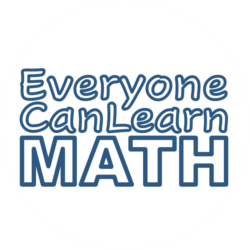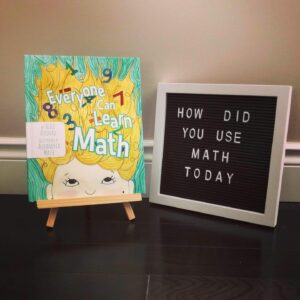
Everyone Can Learn Math is a children’s picture book about applying a growth mindset to learning math. Amy is a girl who thinks she is “not a math person,” but she learns through advice from her friends and teachers that she needs to work hard and struggle through math problems to get better at math. And that is O K A Y and N O R M A L.
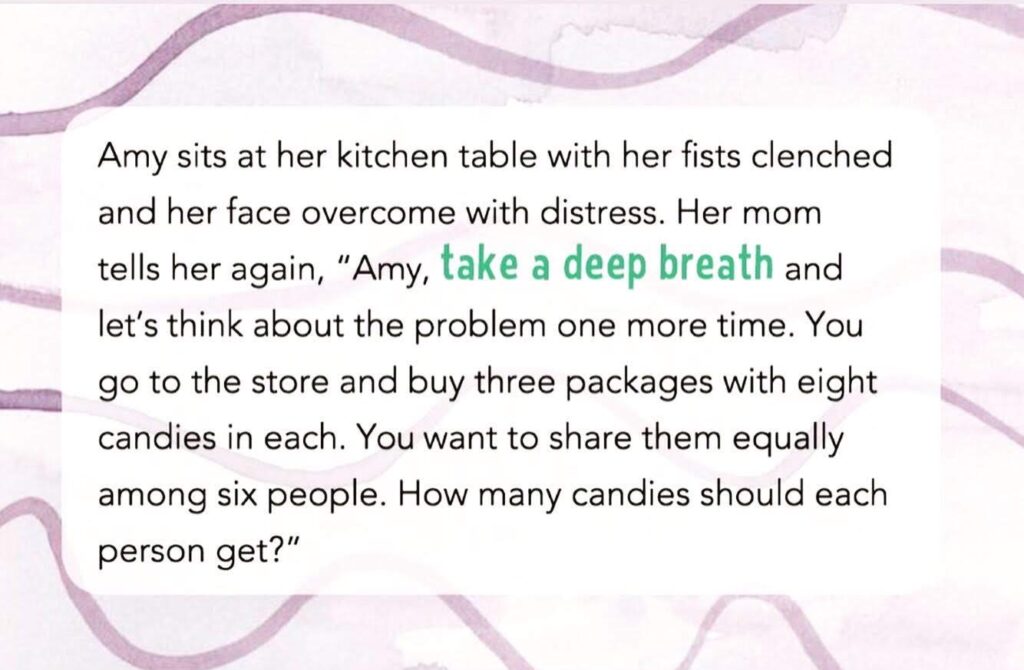
Let’s
dive into the book with the starting problem that is causing Amy so much
distress with her mother at the table. Take out some counters (toys, candies,
food, etc) and work through the problem with your child. Try different
strategies and take breaks if you or your child gets frustrated.
Remember that learning math is just like learning anything
else in life… we practice, we make mistakes, we accept feedback, and we
improve.
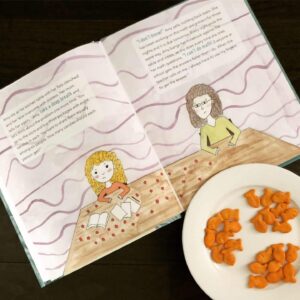
In Everyone Can Learn Math, this array is featured on the classroom wall. Here are ways to use an array to promote numeracy:
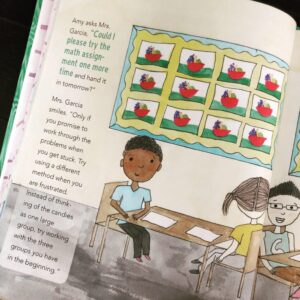
– Counting and skip counting [1, 2, 3, … OR 3, 6, 9, 12 OR 4, 8, 12]
– Addition statements [3+3+3+3=12 OR 4+4+4=12]
– Multiplication statements [3×4=12 OR 4×3=12]
– Decomposition of numbers: use the array to figure out other ways to break down the number 12.
– How Many: Pose the question, How Many? to your child. This is an open-ended question because they can choose to count the bowls, or the grapes, or the fruit, etc. Be sure to have them explain how they counted their item.
In Everyone Can Learn Math, parents and educators have another opportunity to practice math throughout the story with the bulletin board in Amy’s classroom:

There are different kinds of “averages” in math: MEAN, MEDIAN, MODE.
In Ontario, this is in the grade 5/6 curriculum for math. If your children are too young to learn these averages in detail, try talking about them in terms they can understand.
– Mode: “Which number do you see the most often?”
– Median: “Let’s try to put these numbers in order.”

The story in Everyone Can Learn Math has had a profound impact on children and parents around the globe in terms of mindset and confidence when learning math, but the book can be used in many more ways. Please share how you have used the book with children. I would love to hear from you!
Keep spreading the math love <3
![]()
